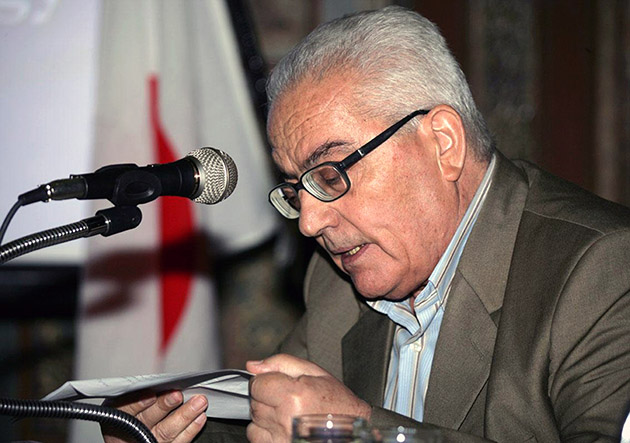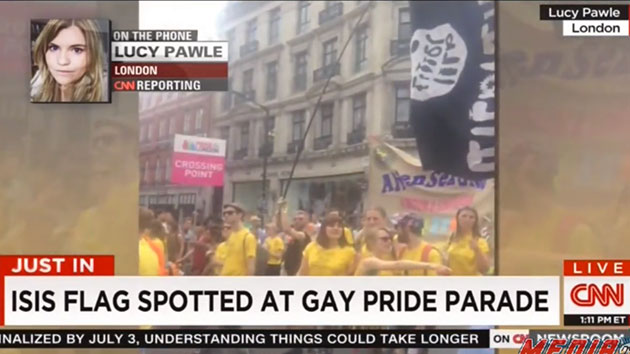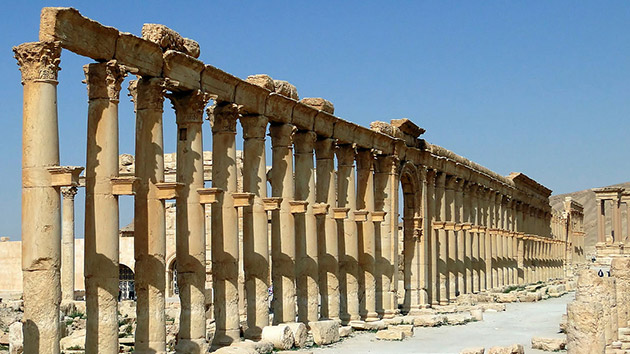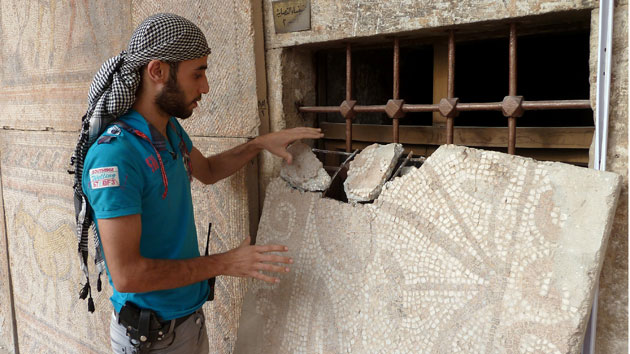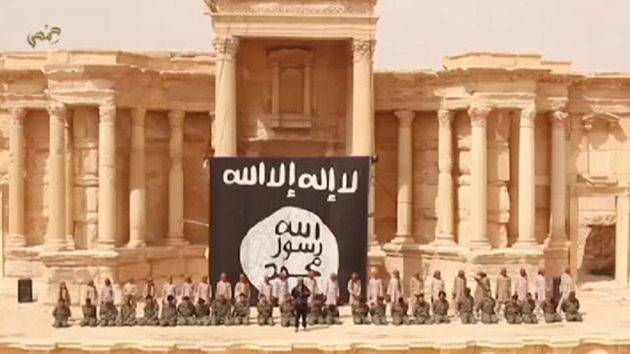
In July, ISIS militants executed 25 Syrian soldiers in the ruins of Palmyra's Roman amphitheater.Sipa via AP Images
In May, the Islamist insurgent group ISIS seized Palmyra, a 2,000-year-old Syrian city. Not long afterwards, it smashed the UNESCO World Heritage site’s cultural relics with sledgehammers, blew up its shrines, and hacked apart the famous Lion of al-Lat, a limestone statue carved in the first century B.C. ISIS fighters bloodied its Roman amphitheater when they used it as a stage to execute 25 captives.
Yesterday, the so-called Islamic State’s bloody occupation of the ancient site continued with the beheading of 82-year-old Khaled al-Asaad, a renowned archeologist who had served as the keeper of Palmyra for more than 50 years. Asaad reportedly refused to reveal the location of Palmyra’s artifacts to ISIS. After over a month of interrogation, the insurgents removed his head, and then hung his corpse from a column in a main square.
Asaad “was a repository of information. He knew every aspect of Palmyra,” says Amr al-Azm, an archeologist who works with a secret network of activists trying to safeguard Syria’s cultural heritage. “He’d seen or been involved with the site for so long that he was exceedingly familiar with it. And it was the kind of information that you acquire by being there, by working there. This is the kind of practical, firsthand knowledge that is really difficult to replace.”
For more than half a century, Asaad was Palmyra’s head of antiquities, and was instrumental in the excavation and renovation that brought it to international fame. Just before ISIS took Palmyra earlier this year, Asaad oversaw the effort to rescue the site’s precious artifacts, shipping many of them from the city’s museum to safety. When ISIS captured the city, he stayed on.
Asaad’s work in preserving Palmyra’s monuments and artifacts would have made him a prime target for ISIS, says al-Azm. “When ISIS took the city they rounded up anybody they considered to be an enemy.”
